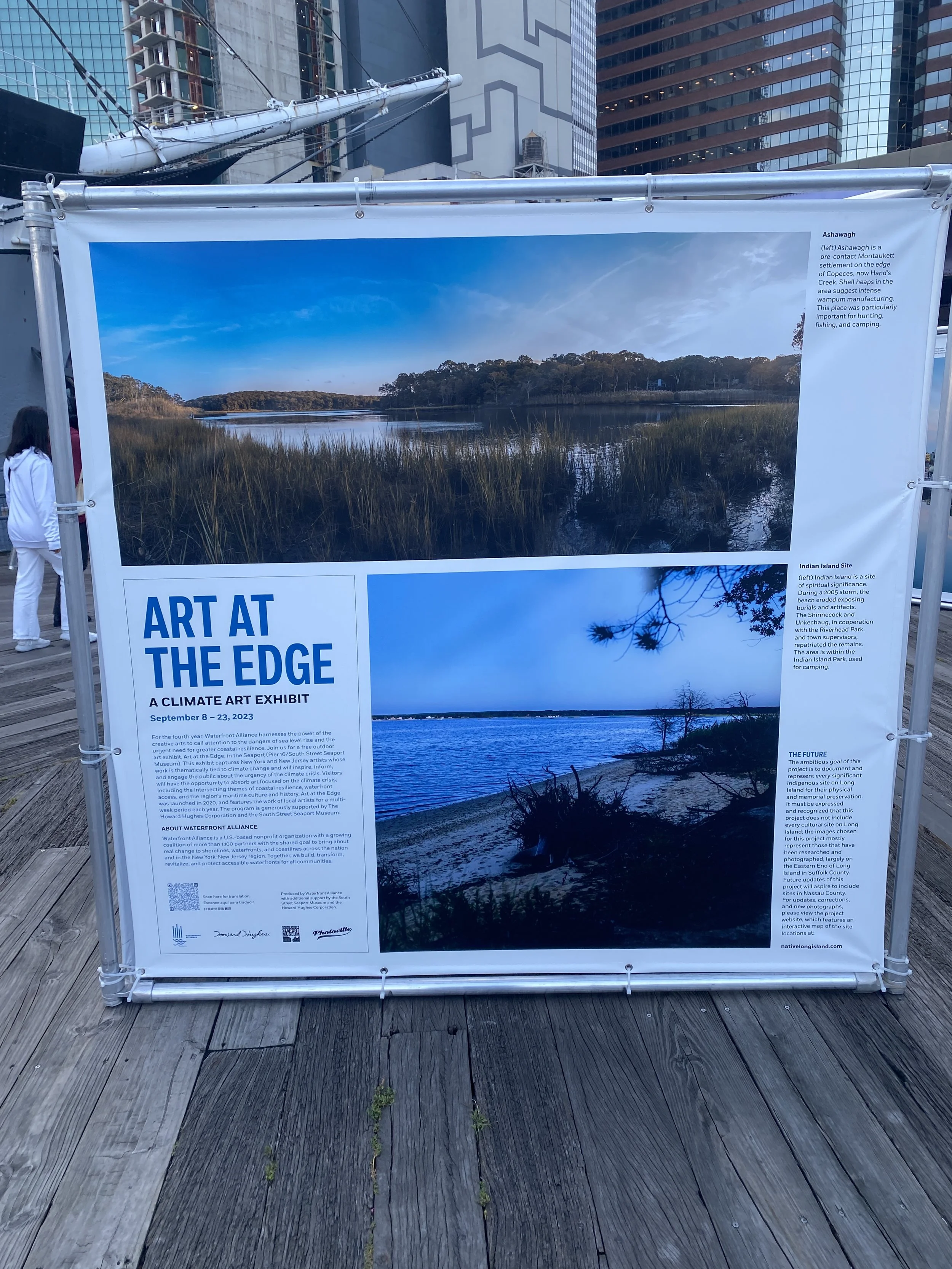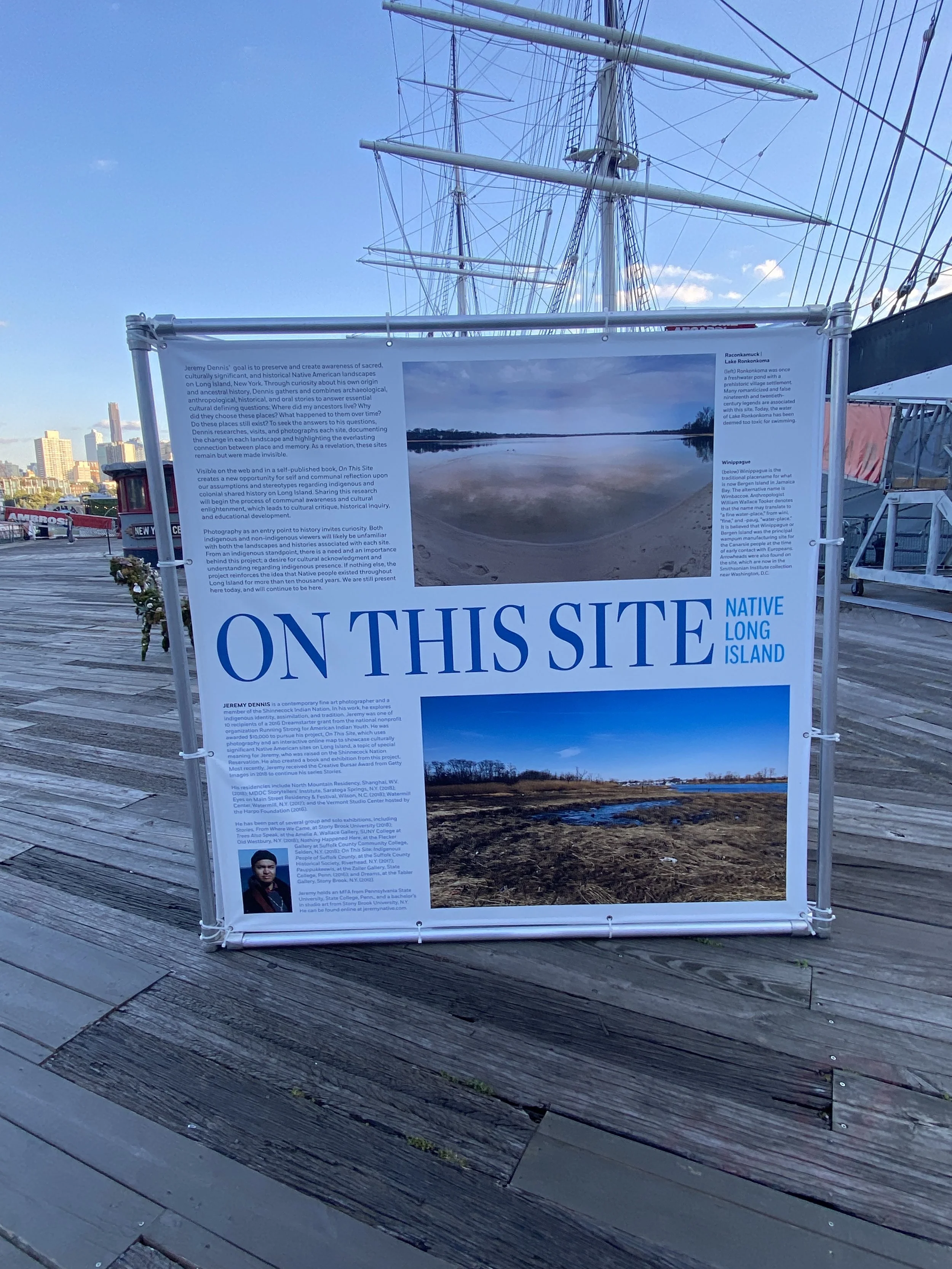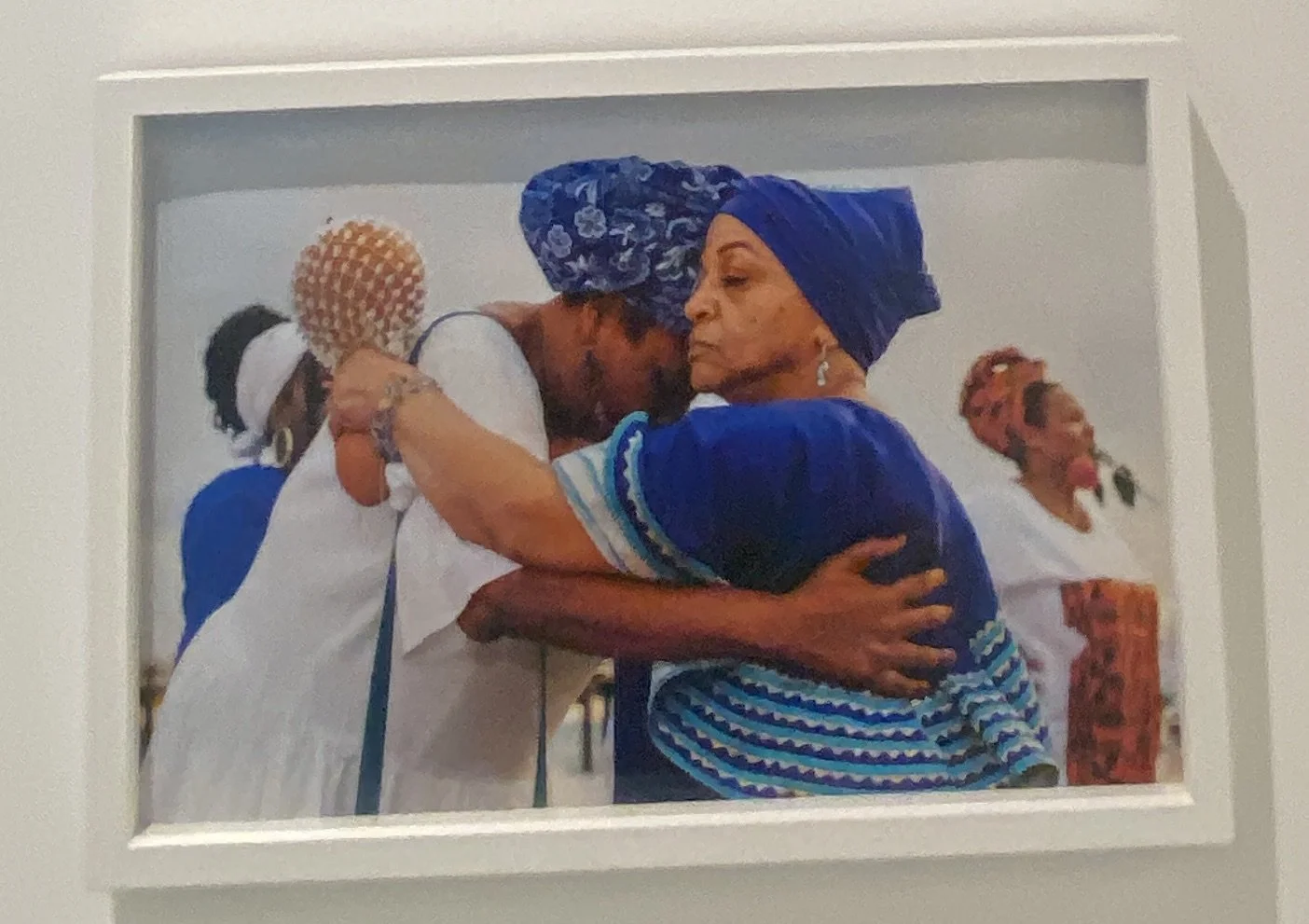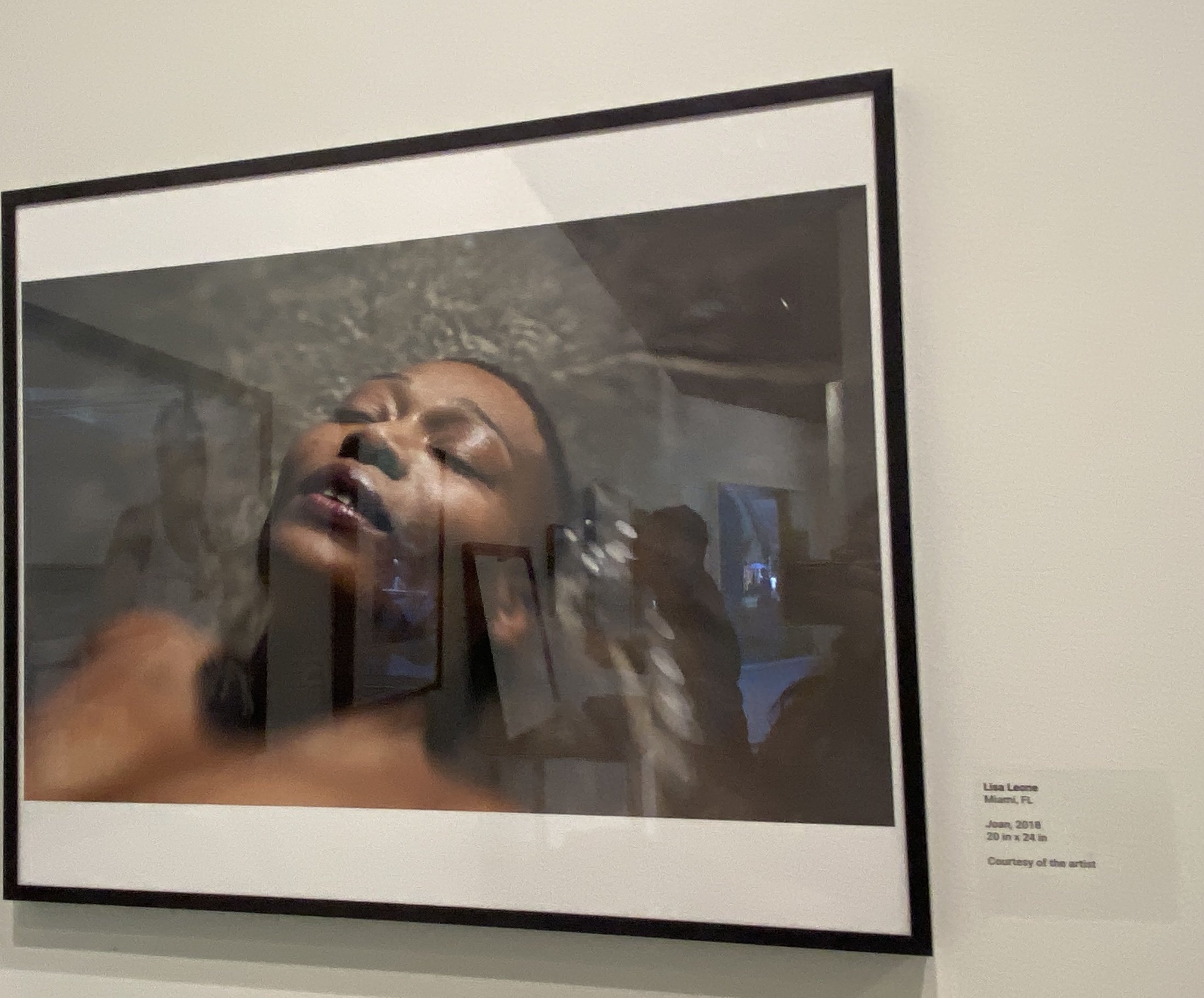Water: A Theme at Three Exhibitions Launched during Climate Week
Images from Climate Week: Rest is Power, Art at the Edge, and Water Stories exhibits
One of the highlights of NYC Climate Week and of the ecological movement in general, is seeing how creative humans can be in articulating the current state of the relationship between humans and our environment. In 2019, I attended a Climate Communications Conference at Columbia University hosted by the Earth Institute for the Center for Earth Ethics where hundreds of K-Uni educators, scientists, contemplatives and artists gathered to talk about why communications around climate issues don’t seem to be moving the needle on mainstream activation and participation in achieving environmental justice. Those of us IN the movement couldn’t be anywhere else. We’ve had our ‘Aha!’ or ‘come to Jesus’ or ‘fall at the feet of the Mother moment’ - however it came to you - you have seen it and it cannot be unseen. You have heard it, and it cannot be unheard. For those who have ears let them hear.
The general reporting consensus is that we need more women’s leadership, more youth participation and a full integration of Indigenous perspectives. We lament the untapped resources of arts, culture and heritage which move people deeply. And.. what we understand from formal studies and reports, and maybe more importantly, a millennia of anecdotal evidence: humans protect what they love. So, let us fall in love again with the Earth.
While all of this has gained traction in some mainstream news reporting, community programming, etc. it still has not make the jump to funding. For example, Monga Bay reported this month:
“A report from funders of a $1.7 billion pledge to support Indigenous peoples and local communities’ land rights made at the 2021 U.N. climate conference found that 48% of the financing was distributed. The findings also show that only 2.1% of the funding went directly to Indigenous peoples and local communities, despite petitions to increase direct funding for their role in combating climate change and biodiversity loss. This is down from the 2.9% of direct funding that was disbursed in 2021. Both donors and representatives of Indigenous and community groups call for more direct funding to these organizations by reducing the obstacles they face, improving their capacity, and respecting traditional knowledge systems.”
But should this really surprise us? And what of the artists? Who is in fact in charge of integrating this important educational work into mainstream curricula? Who is responsible for funding the artists to make the culturally significant work?
I think back to the late 1990’s / early 2000’s serving as co-director of MA Dance: The Movement Alliance, a 6 woman dance collective in Boulder, CO. We received small grants from city, county and state levels and collaborated with organizations who received funding from the National Endowment for the Arts or NEA. It was then that I learned most of the local funding awards were actually roll downs from the NEA - grants from the national endowment to fund local programming - not additional funding. When Denver choreographer Cleo Parker-Robinson was nominated to join the NEA board, the chair came to Colorado for her induction and a celebratory concert performance. The then chair rallied the crowd to not only applaud Parker -Robinson but the announcement of an increase to the annual budget for the NEA, bringing it over $100 million dollars for the first time! We cheered fervently. And then, he said, just to give us some perspective, this meant the annual budget of the entire US National Endowment for the Arts was now the equivalent to the annual budget for the Berlin Opera House. We fell silent. Now, 23 years later, the NEA budget has crossed $200 million, while the city of Berlin’s arts budget soars over 1 billion dollars.
When a nation has so little respect for its artists, it’s easy to see why more impactful work is not being done. While my heart hangs heavy EVERY TIME I reflect on this. It is all the more important to view and lift up the work of these artists offering a multitude of cultural perspectives, yet all pointing to the sacredness and healing aspects of water on our physical, mental, emotional and spiritual health. Including our relationship to land and place. It is with this lens of the challenges they face to tell these stories, we are all the more grateful for their dedication to share the beauty, grace and insight from their individual, social, and ancestral inquiries.
ART AT THE EDGE - SOUTHSTREET SEAPORT
Art at the Edge, a project of the Waterfront Alliance, was on view at South Street Seaport away from the marches and ‘high-level’ meetings in the halls of the United Nations. Here, the artists work engaged with those already wandering the edge of the East River offering a view into the sacredness of Indigenous water landscapes, bringing sea to land, and raising issues of environmental justice. This simple, yet effective exhibition, invited the onlookers to change their perspective on ‘place’ seed planting a sacred lens, an innocence lens, and a call to clean water for all.
A Climate Art Exhibit, produced by Waterfront Alliance, NYC
As Women of the Water explore ancestral recovery through water such as holy wells and sacred rivers, here Shinnecock Nation tribe member and artist Jeremy Dennis brought out the work of ancestral rediscovery through inhabiting and turning attention to these lake shore images in ‘On This Site: Indigenous Landscapes Throughout Long Island, 2016 – Present.’
“Dennis gathers and combines archaeological, anthropological, historical, and oral stories to answer essential cultural defining questions: Where did my ancestors live? Why did they choose these places? What happened to them over time? Do these places still exist?”
To view the work here in this very public space is almost eerie. Should I be looking? Can I hold both awareness of the sacred brought on by these words and images and the 3D reality of people milling about and shopping at the edge of this island?
Nicole Vergalla’s ‘Gowanus Dredgers’ photographs exposed the juxtaposition the toxicity of the EPA Superfund Site of the Gowanus Canal with nature which still thrives there. The exhibit is rounded out by the playfulness and color of the 'OYSTER PARTY’ by Nicole Colette Wood bringing attention to the mighty crustaceans which help with efforts to keep water sources clean filtering up to 50 gallons of water per day.
Lisa Leone
Miami, FL
Joan, 2018
Rest is Power
We are not meant
to bathe bent in brutality
Ancestors sacrificed solace,
a place to relax
in natural freedom.Bodies are not meant to overwork.
Rest is libation.
Replenish spiritually,
mentally and Physically.
Self-care is satin strength.
Cyd Charisse Fulton
Laylah Amatullah Barrayn
Brooklyn, NY
Untitled from the series,
“A Return to Water”, 2021
Institute of African American Affairs, New York University, NYC
If you don’t know the Nap Ministry, consider this your sign that it’s time. The Nap Bishop, Trisha Hersey’s thought and spiritual leadership has been critical and delightful and delicious in this time of decolonial untangling. Last year, I listened to her book, Rest as Resistance, appropriately while lying in bed, a huge feat to stay put committed to several days in a row of not overworking but instead allowing the medicine of rest in. One must simultaneously embrace the conscious resistance to capitalism, productivity measurements and dominator culture while NOT holding the energy of resistance IN the body so that one might actually, deeply rest.
During her 2023 fall residency at New York University I visited the Rest is Power exhibit which featured not only her work but that of other black artists’ perspectives on confinement and freedom; of work, of existence, of love (in many forms) and of rest. The exhibit opened during NYC Climate Week and while the focus of the exhibit is on black bodies and black artists, the theme of water is unmistakable. It makes its way through some of the most nurturing and loving parts of the exhibit in solo images of self love and rest, togetherness and the most sacred communities in ceremony.
So much gratitude for this exhibit of watery, peaceful, restful art rocking us across the thresholds of spirit and nature, raising identity with poetry and affirmations of our calling to tend to the wisdom of our ancestors. Please support these artists and the Center for Black Visual Culture (CBVA) at NYU.
Kalila Ain
Brooklyn, NY
My Mother Named Me Beloved, 2021
“My Mother Named Me Beloved centers the deep, unwavering love between mother and daughter, water as a source of reconnection, and exhalation as a result of this union.”
‘REST is Power’ at the
Center for black visual culture
Water Stories:
River Goddesses, Ancestral Rites, and Climate Crisis
The Water Stories exhibit at Harvard’s Radcliffe Institute was an exciting conclusion to Climate Week activities leading me out of Manahatta and arriving to Massachusetts where I would visit Wampanoag Lake and the landing site of the colonists off the pier in Provincetown.
Knowledge of this work had made its way all the way across the water to University College Cork in Ireland where colleagues from the ‘Feminist Walking Tour of Cork City’ organized by award winning Walking Pedagogies professor Maggie O’Neill, had told me Harvard was up to some exciting embodied ecology centered Goddess work.
Coming from the Parliament of World Religions in Chicago where I had just spoken on 'Ancestral Recovery work for a panel on ‘Sacred Water in a Climate Changed Era’, I felt in incredibly sound company.
Here the cultures of India and Southern Asia spill over into images of water in both modern and historical context. The skill of this exhibit requires no further explanation only an invitation for you to explore. As a researcher, who is looking for evidence of our mutual interconnectedness to the sacredness of earth, perhaps underscoring our mutual indigeneity both lost and found, this brief tour of creative work on sacred water from an array of cultural roots reveals our common heritage.







